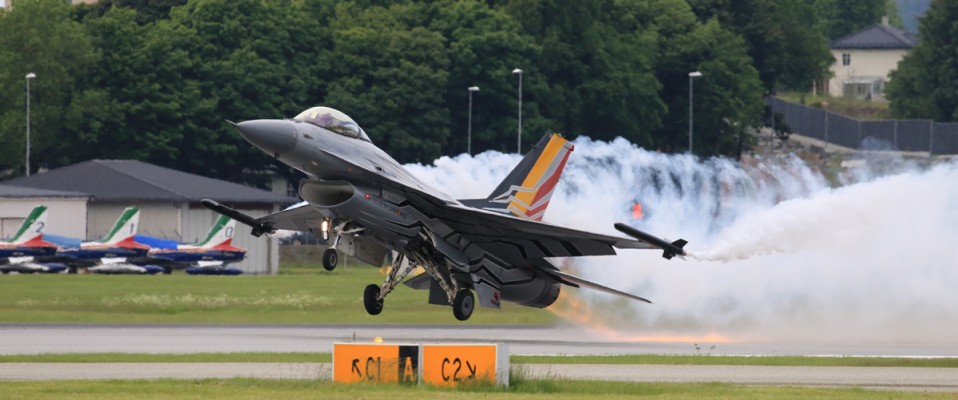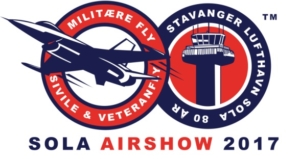 Sola Airshow 2017
Sola Airshow 2017
The 80th Anniversary of Sola Airport
It’s become increasingly common to attend to events arranged to celebrate anniversaries; airplane models, squadrons, air forces, and so on are very often the object of these events. In this case an airshow has been set up the second weekend of June in order to celebrate the 80th anniversary of Sola airport, Stavanger’s civilian airport, and Air Station, home to the 330 Squadron of the Royal Norwegian Air Force (RNoAF).
Stavanger is a Norwegian town whose very first origins date back to 10,000 years ago; fast forward to last century and let’s stop in 1933, when the members of the local aero club started to discuss about the need for an airport. In 1935 works started and went on for two years; once completed, Sola airport was the second airport in Europe to have concrete runways. In addition, also a seaplane harbour was constructed along the Hafrsfjord, very near to the new airport.
The opening ceremony took place on Saturday 29 May, 1937; at 18.00, after several speeches held by local authorities, emphasizing how air transport was going to develop the until then isolated area (mail from Oslo took 36 hours to be delivered), His Royal Highness Haakon VII declared the airport officially opened. The following day an international airshow took place, attracting over 30,000 people; during the third day of exhibitions a simulated dive bombing run performed by three Scimitars ended tragically, when the third pilot failed to pull up the plane and deadly crashed into the ground at high speed.
Despite the high expectations the flight connections during the following three years didn’t succeed in becoming a regular schedule. The number of passengers was constantly too low to justify a planned timetable; more than once services went canceled, usually in autumn.
On April 9th, 1940, 132 German Fallschirmjäger (paratroopers) were dropped on the airfield, notably the second air assault in the history of WW II; Sola fell in Nazi hands and became a sort of Luftwaffe’s forward operating base, also if the aircraft primarily based in the nearby seaplane harbour were Arado Ar 196. Five years after Sola was recaptured with another paratrooper landing, this time a joint British-Norwegian one, and the airfield became the first one to host RNoAF aircraft after the war.
Now in the present day; one of the first announcements regarding the airshow was the partecipation of LN-637, the CF-104D brought back to airworthy conditions thanks to the efforts of the Friends of the Starfighter, a Norwegian group of volunteers, founded in 2003, that succeeded in such impressive task. Just a couple of days before the airshow the team performed a test flight, apparently without a single problem; unluckily the following inspection highlighted a problem of oil leaks from the generators, which forced the association to ground the plane.
Notwithstanding this and another number of cancelations, the airshow’s program remained an interesting one to attend; the participation of aircraft which can’t easily be spotted outside of Scandinavia (e.g. SAAB models), the chance to view very well known airplanes sporting Norwegian insignia, tight formations and really dynamic presentations, and the visit to the nearby Flyhistorisk Museum were all good reasons to be there. Anyway, 28.000 people thought the show was worth the trip.
Stavanger’s economy started to flourish again in 1966, when the first oil field was discovered 110 miles off the southwestern coast of the city. Today its nickname is the Oil Capital and the city is the third urban zone of Norway, well connected with the rest of Norway and Northern Europe capitals. Sola airport has a sustained rate of take-offs and landings and so the airshow dynamic performances had to be interleaved with the airport traffic; Norwegian, SAS and KLM have the lion’s share but during the day some other different companies have been spotted.
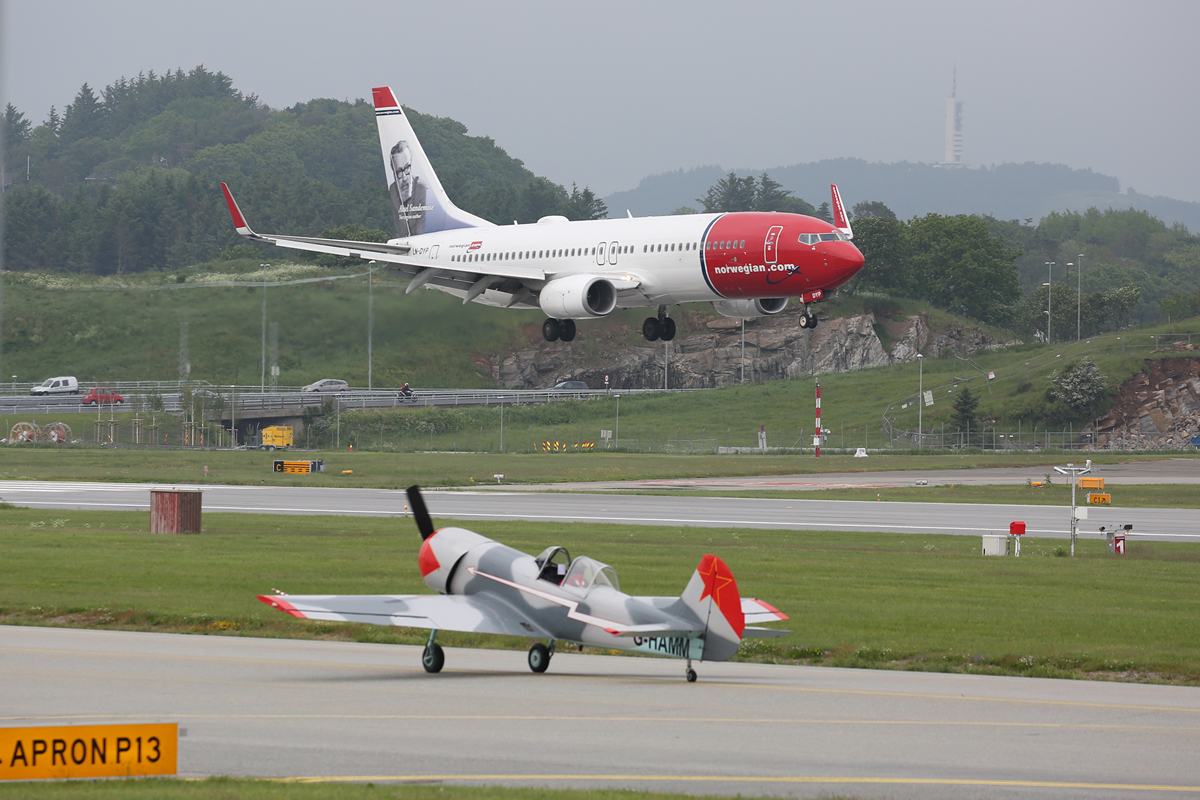
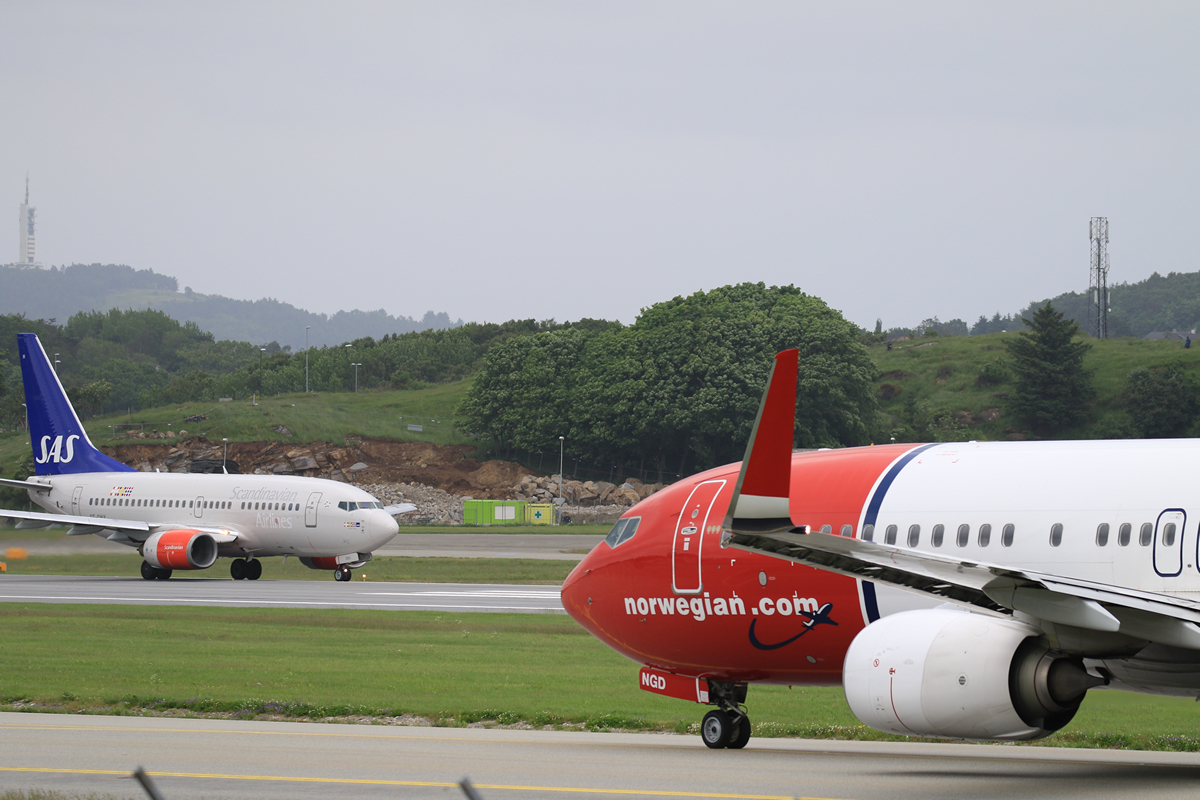
In addition, all Norwegian B737-800s have special tails, each one depicting an historical figure in some way related to Norwegian history: a special treat for an aviation photographer!

Moreover, from the apron where the public was standing it was possible to note the frequent operations of the adjacent heliport, where Bristow and CHC operates flights towards the off-shore platforms.
The airshow has been also a chance to pay a tribute to aircraft which have been in force with the Luftforsvaret (aka RNoAF, Royal Norwegian Air Force), mostly thanks to several Norwegian private associations that keep alive this heritage. Let’s start with two icons, Spitfire and Mustang; the Norwegian Spitfire Foundation (NSF) came to Sola with a Spitfire Mk.IX (RR232 – PV181/RAB) and a P-51D (G-SHWN/GA-S) “The Shark”, while another Spit, a Mk.XVI (RW386/NG-D), was brought by the Swedish company BILTEMA. The NSF’s Spit has been painted replicating the unique scheme flown by the Norwegian Wing Commander Rolf Arne Berg, 132. (N) Wing, who fought, as many other Norwegian pilots in exile, as part of the Royal Air Force. The RNoAF has never had Mustang in service but during WWII several Norwegian pilots flew them while based in England.
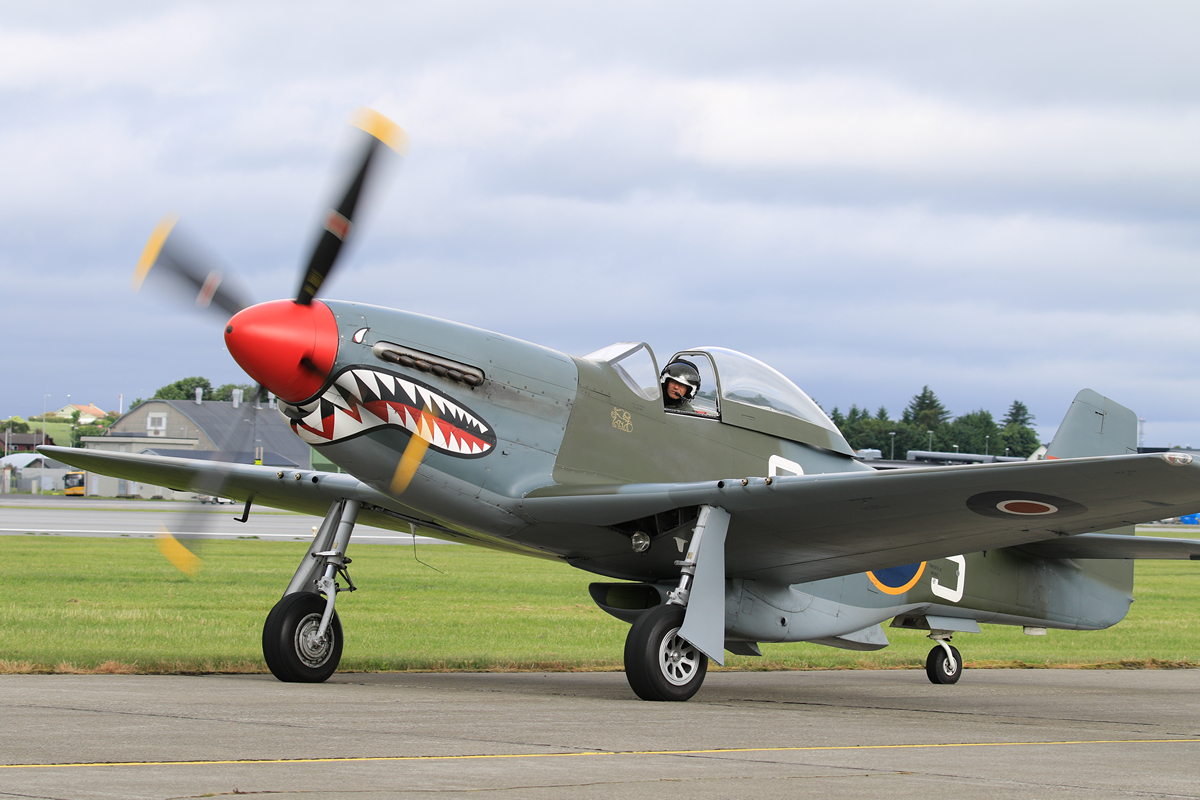

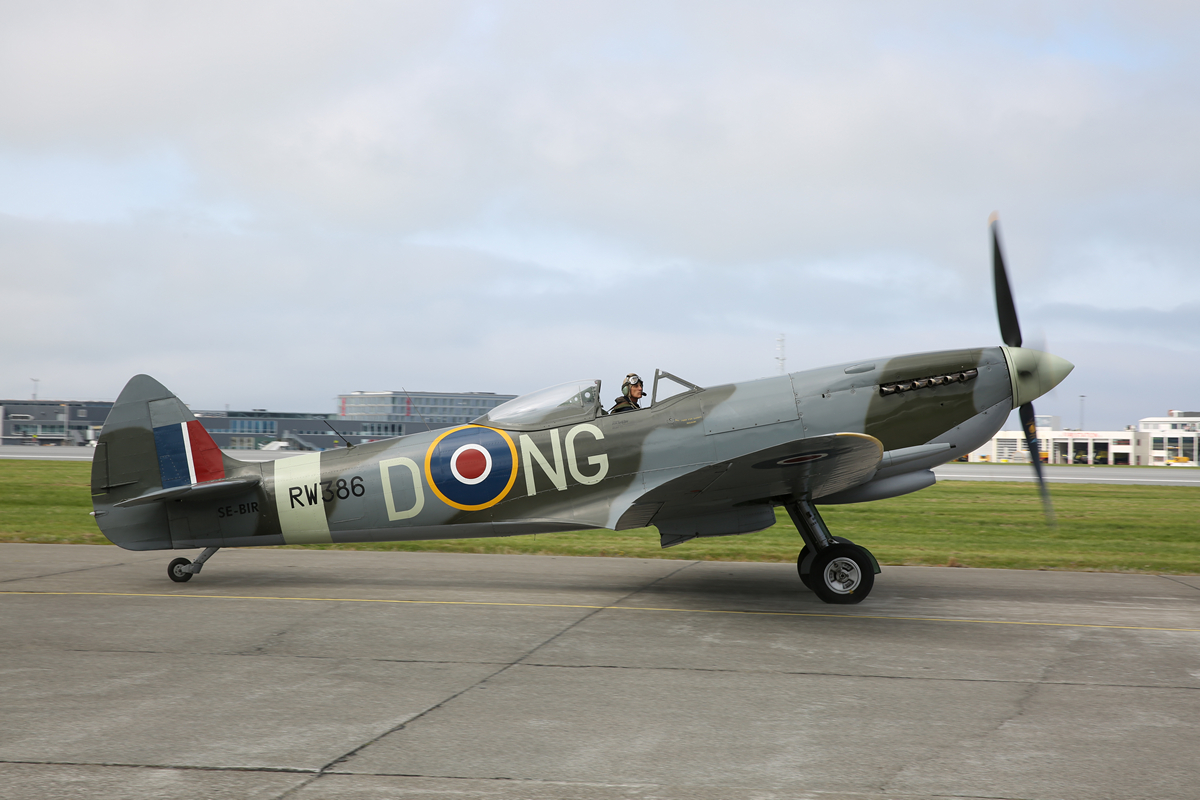
Another renowned airplane was well represented in Sola, the North American T-6 Texan, here known as Harvard. Norwegian pilots during WWII had way to learn to fly on the Harvard when based in Little Norway, in Canada. After the war Harvards were based mainly at the Flight School in Gardermoen and then phased out in 1955. Three different Harvards have flown during the weekend; two of them performing together, an AT-6D Mk.III (LN-WNH) with a RNoAF camo, brought by Wing of Freedom, a Norwegian private association, and a T-6 Mk.IV (LN-PFX) in an all-metal USAF livery, courtesy of the Norwegian Flying Aces.
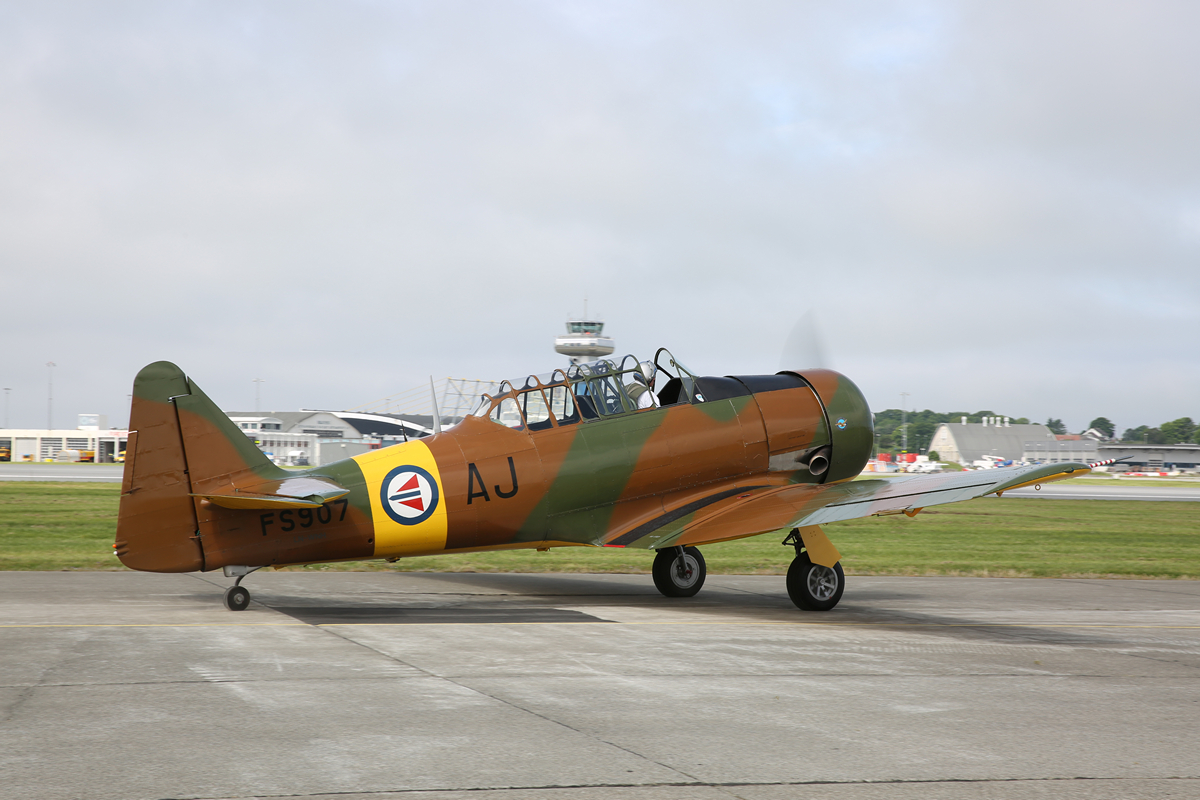
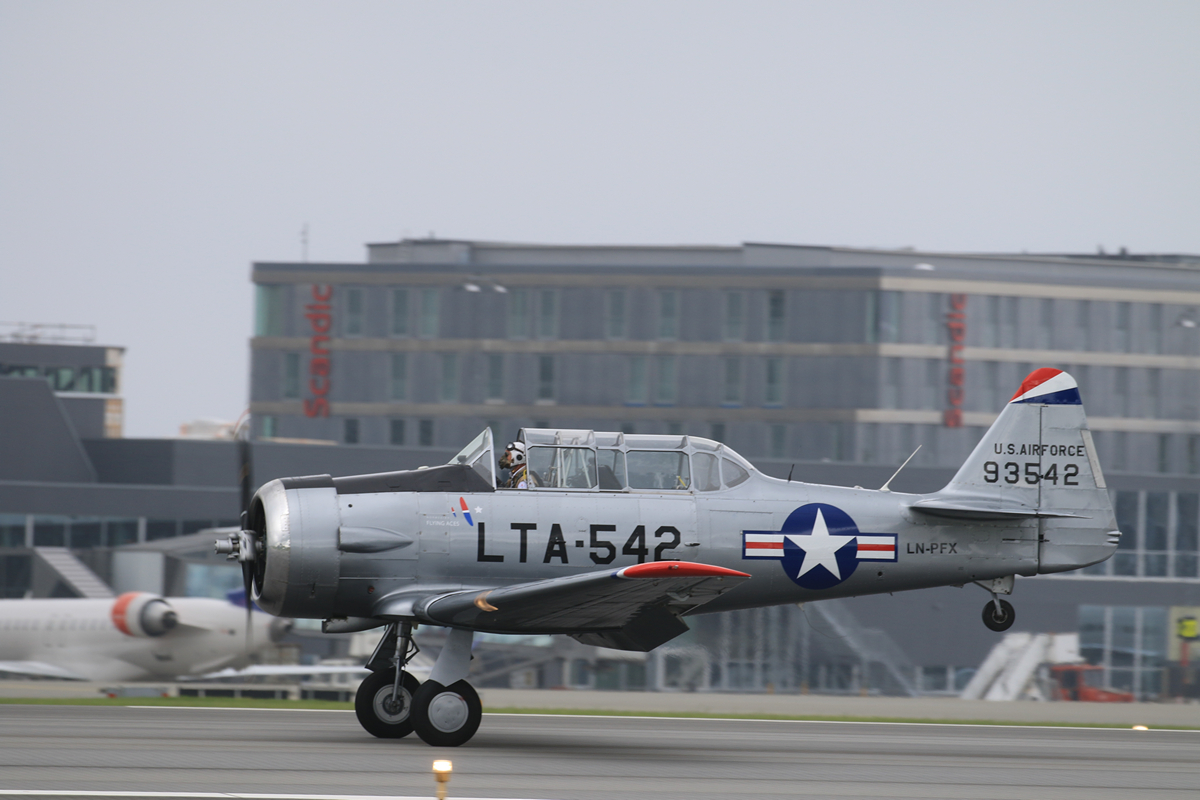
The third one, another Mk.IV (G-BGPB), flies with the colours of the Portuguese Air Force, the last one to have her in service after USAFE and Luftwaffe. After a couple of changes of ownership and an accident, it was bought in 1989 by Duxford based Aircraft Restoration Company in order to start a meticulous rebuild, returning to the sky in February 2000. This Harvard, dubbed Taz (the famous Looney Tunes character), has flown both days with a not easily to be seen aircraft, a Noorduyn Norseman Mk.VI (R-AF). This aircraft, flown by NSF pilots on behalf of the owner, the Aviation Museum in Bodø, was based also in Sola with the 330 Squadron during the RNoAF service (1946-1959).
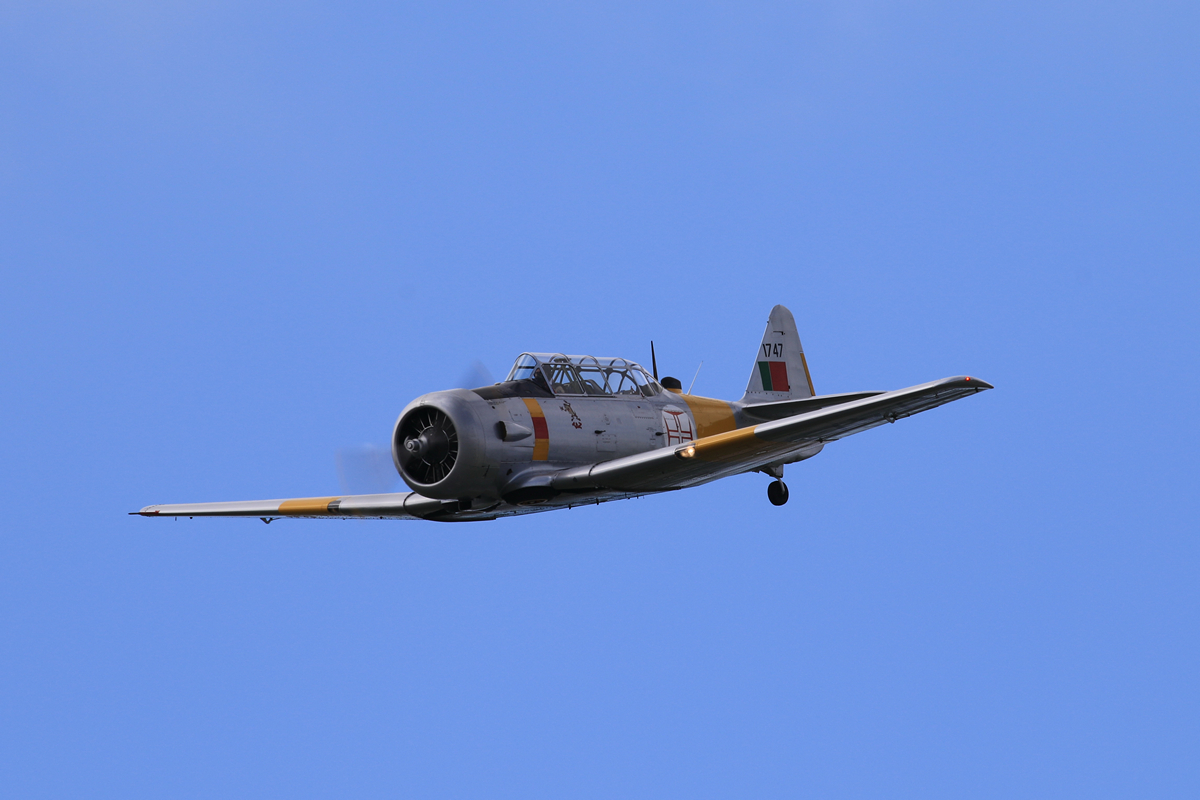

Another WWII-era plane taking part to the show has been the immortal C-53 Dakota. Dakota Norway Foundation is very active in participating the European airshow summer season with this aircraft, wonderful in her aluminium finish. This very airplane obtained the Norwegian registration LN-WND in 1986, having served before, among others, in the Finnish Air Force. Norwegian Dakotas served before in RAF No.20 Transport Squadron until 1946 and then in RNoAF 335 Squadron since 1950. Last two machines were dismissed only in 1973. During the airshow the Dakota has taken to the skies the parachutist team and several passengers who payed for the pleasure of flying on such historic plane.

An aircraft with strong ties with Sola is the PBY-5A Catalina. “Miss Pickup”, the one present at the airshow, is based in Duxford, UK, but the Norwegian Air Force started to use Catalina since June 1942 with 330 Squadron based in Iceland first and Scotland later, and with 333 Squadron since May 1943. After the war the two Squadrons relocated to Sola, with detachments on other bases along the coastline. The aircraft remained in service until 1961. A beautiful one is kept in the nearby Flyhistoric Museum.

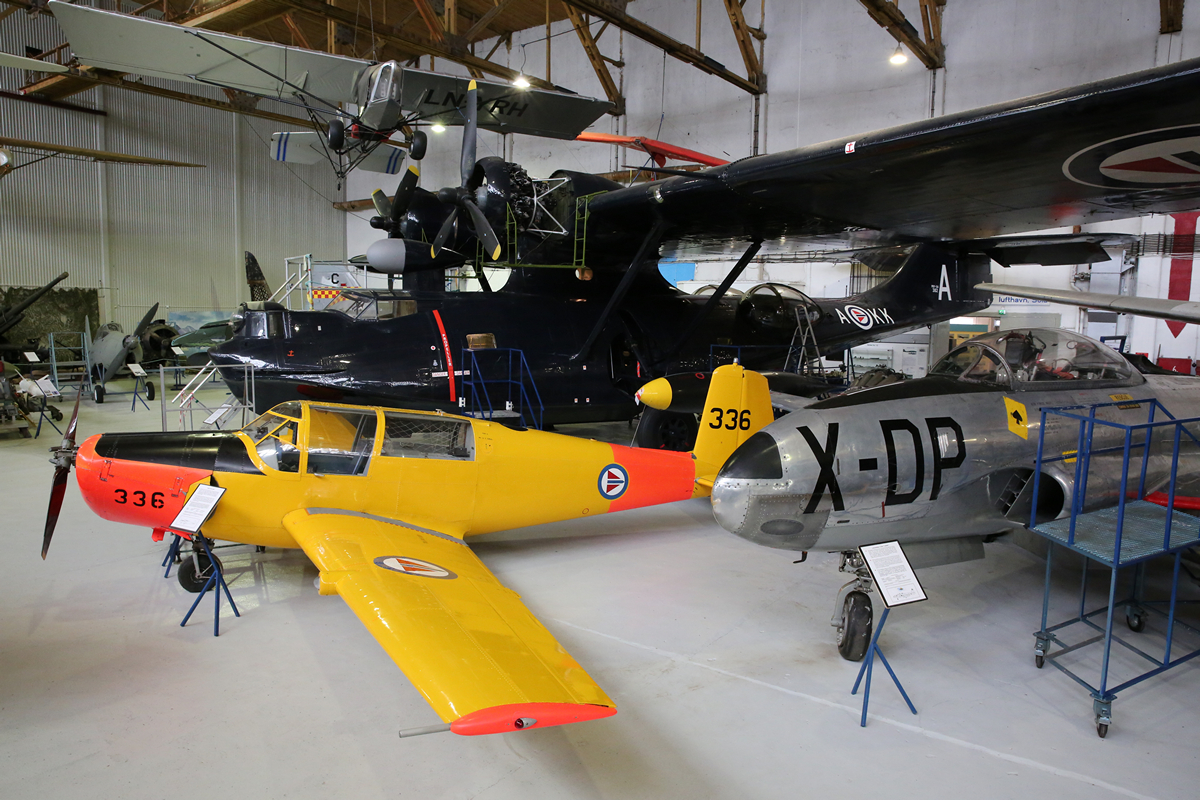
A model linked in a different way to the RNoAF’s history is one that served on the opposite side during the war; the Fieseler Fi-156 Storch. This aircraft was especially developed for reconnaissance, liaison and other special tasks; her upper wing and an air-cooled engine delivering 240 sHP allowed the plane to land and take-off in really impressing short spaces, a feature exhibited during the show. After WWII Norway’s air force incorporated 30 of them, keeping in service until 1954. Sola airshow has been the national premiere for this airplane, privately owned and arrived in Norway in August 2016. The Storch kept in the already cited museum is exhibited with one wing folded.
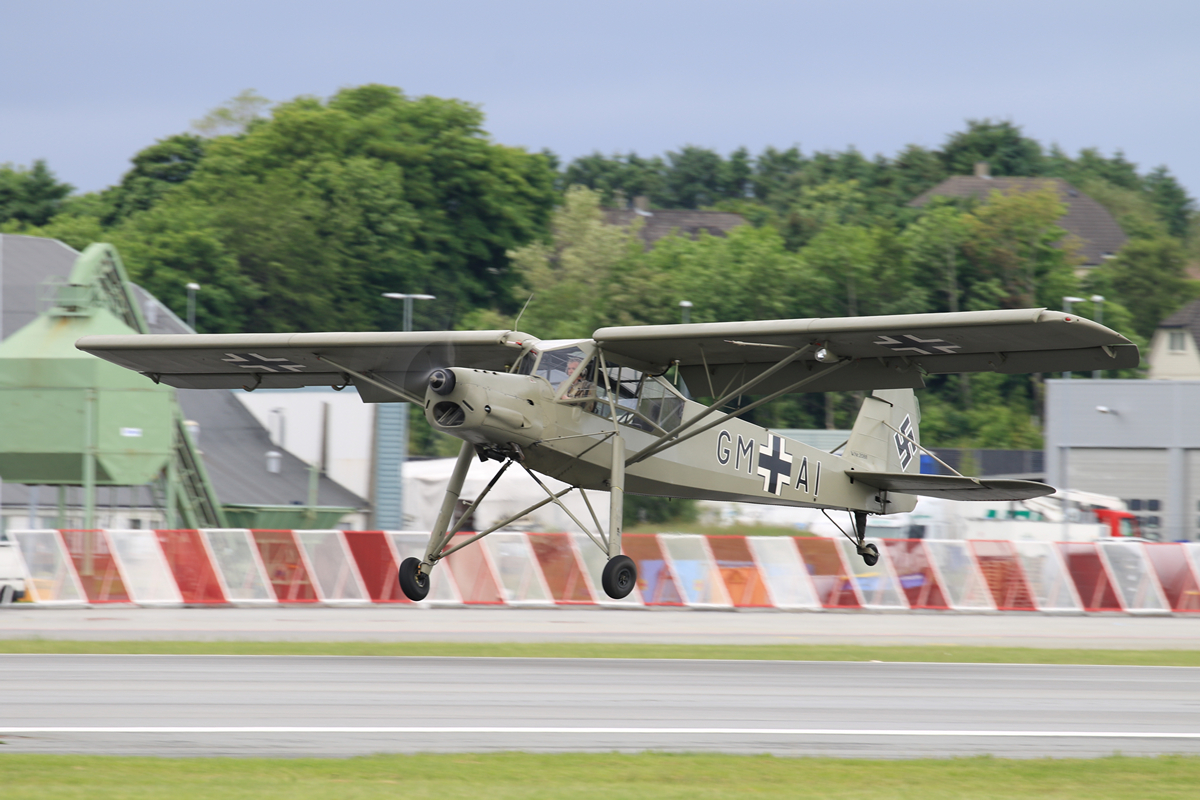
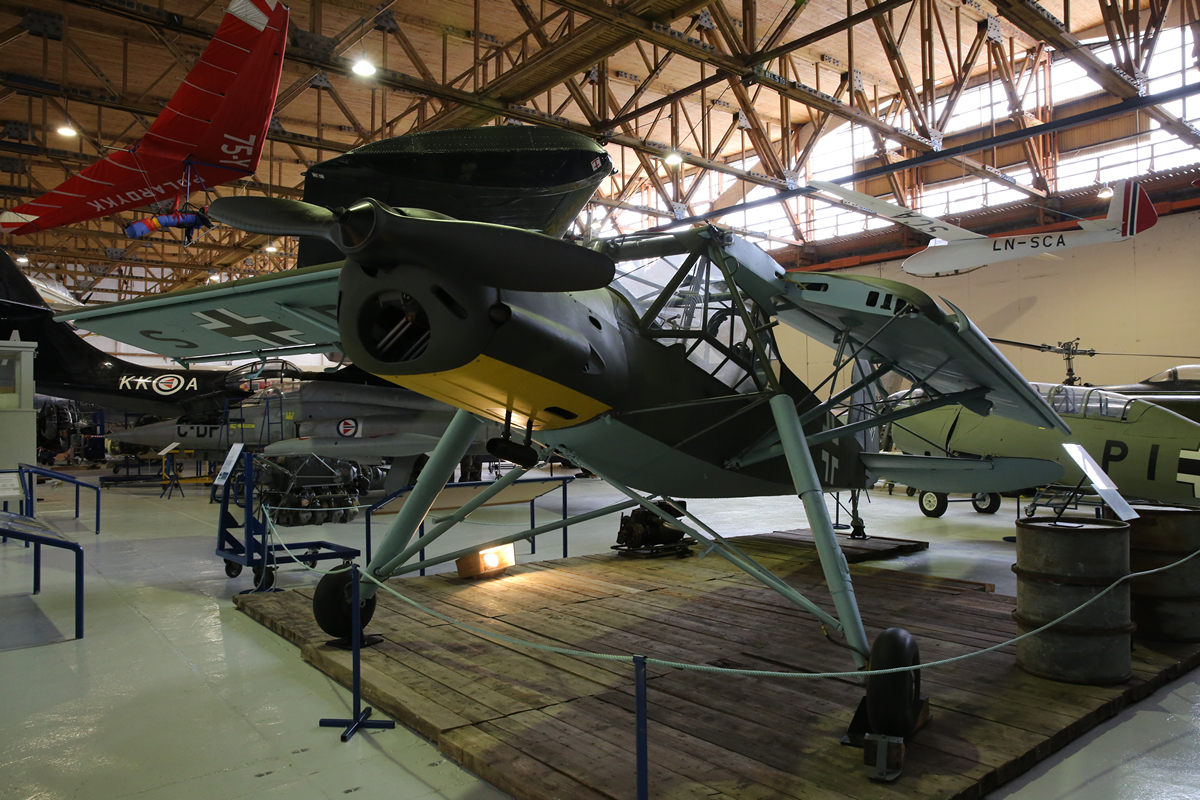
The next stage for RNoAF, as almost every other air force, was to trade pistons for first generation jets; to bring on the memory of that period the Norwegian Air Force Historical Squadron has brought to Sola two de Havilland Vampire (LN-DHZ/M-PX and LN-DHY/K-PX, both obtained from the Swiss Air Force), which served immediately since the end of the Second World War. After Norway entered NATO in 1949 the first batches of U.S. MAP (Military Aid Program) planes started to arrive, and in 1957 last Vampires went dismissed. Most went scrapped but someone was kept, for instance one is stored at the Luftfartsmuseet in Bodø. In Sola the two Vampires, manned by former Air Force pilots, have exhibited taking off in pair and flying a very tight program with excellent chances for the photographers.
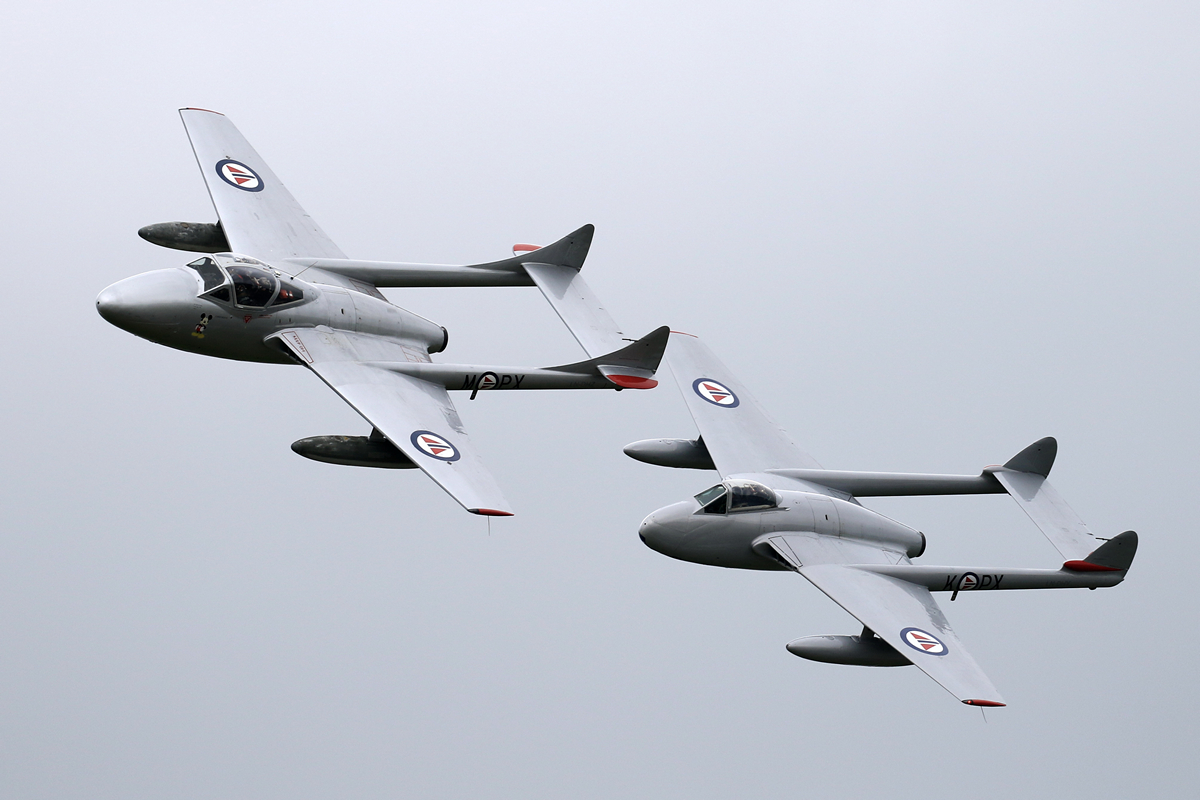
The show was an opportunity to see two different SAAB trainers, both in service with the Norwegian Air Force; the Safir and the Safari. 30 SAAB 91B-2 Safir served in the RNoAF’s flight school between 1957 and 1982, and nowadays most of them still fly in Norway. The one shown in Sola just crossed the runway to reach the flightline, being property of the Sola Flystation Flyklubb; most of the pilots flying her started their career on these very planes. Safir’s successor is another SAAB product, the MFI-15 Safari, since 1981 operating mainly in Bardufoss, home of the RNoAF Flight Training School, for basic training and pilot selection. In Sola the Air Force has brought its own demo team, the Yellow Sparrows, formed by 4 planes piloted by RnoAF’s instructors; during their exhibition the team has executed several formations, flying always at very close distance each other.
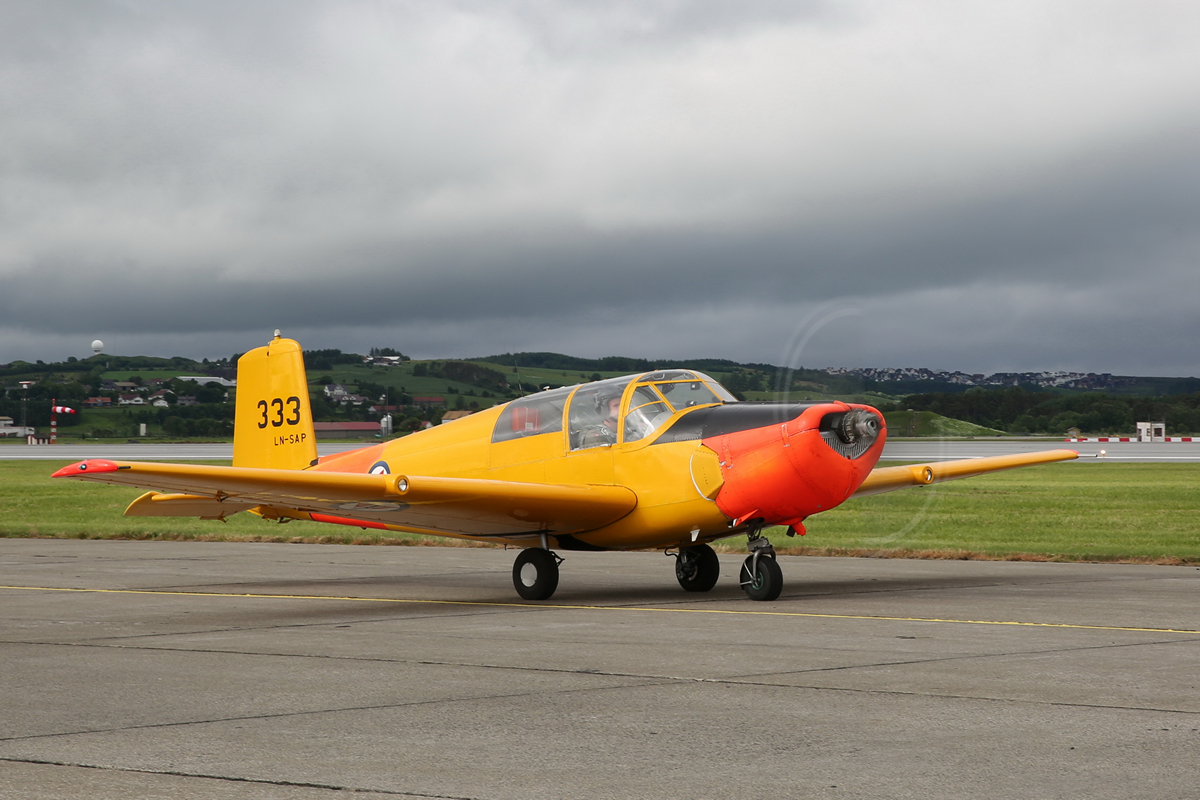

Aviation culture is well spread in Norway, indeed several aviation amateurs have brought their interesting aircraft; one based in Sola has been a Boeing Stearman N2S-4 (LN-STM) in gorgeous U.S. Navy colours, while an intriguing Bell UH-1E Iroquis (LN-OUS), based in the Stavanger region, has been a real bonus. Perfectly restored, this chopper has spent her first years in Vietnam with the Marines; also this machine represents a link with RNoAF’s past, 35 of them having served with 719 Squadron in Bodø and 720 Squadron in Rygge from 1963 to 1990. Mostly were Vietnam veterans as well, often delivered to the Norwegian Air Force complete with bullet holes! Some of them had been deployed in Lebanon for an UNIFIL mission between 1978 and 1979.
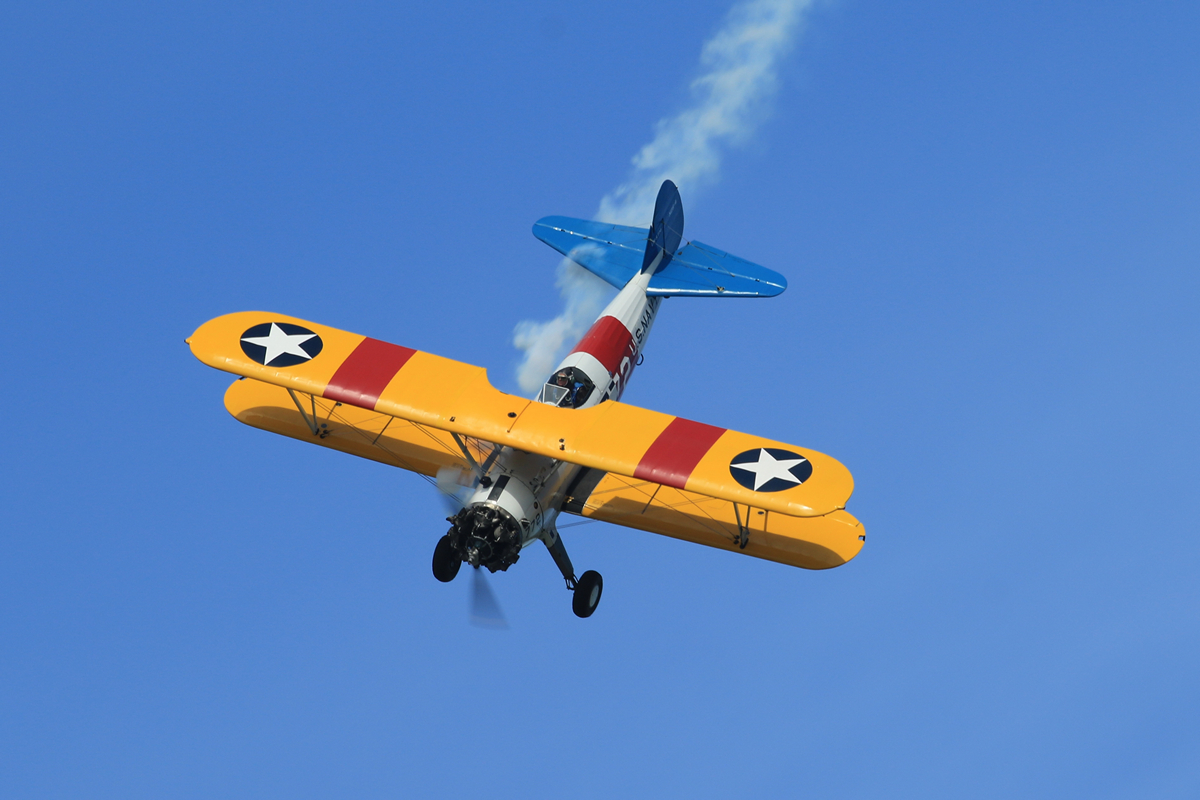
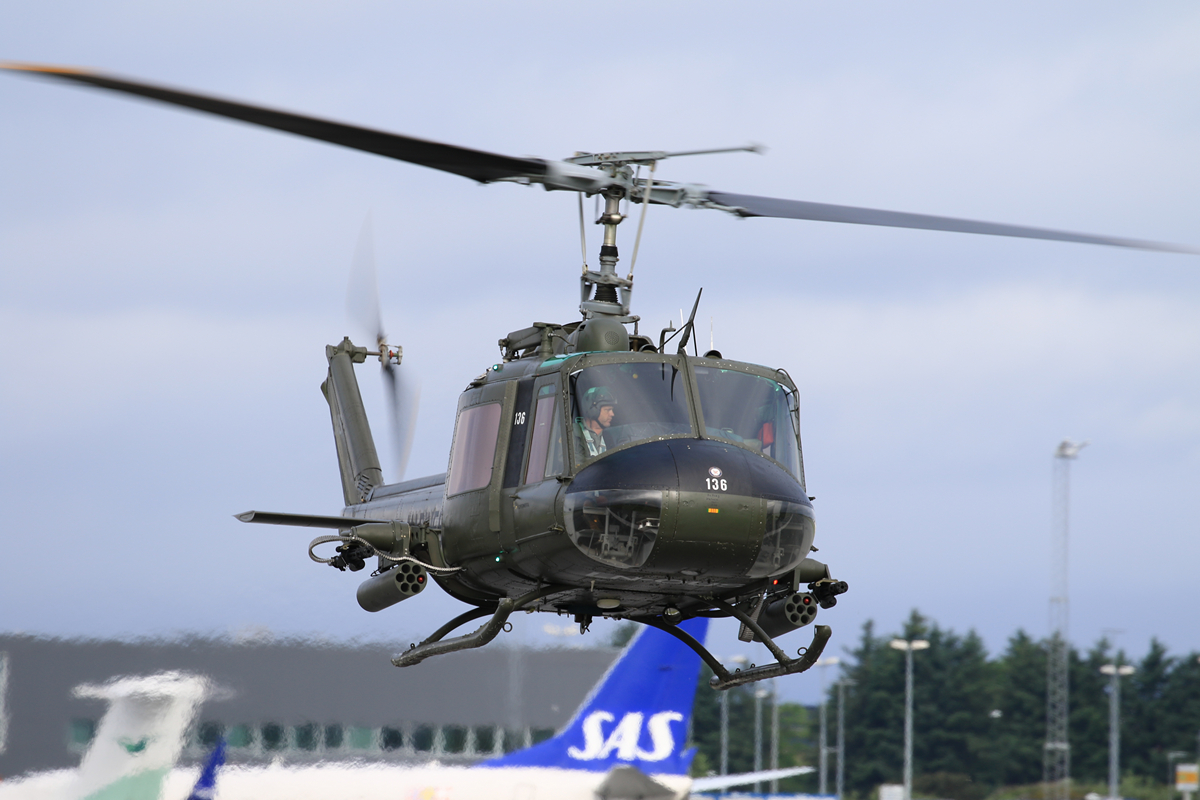
A recent addition to Norwegian Flying Aces collection is a T-28B Trojan; just arrived from Canada (still registered as C-GSLA), has debuted in Sola for her first Norwegian airshow. Painted with an U.S. Navy scheme, the Trojan has left a vivid impression for her bulky appearance and fast passages.
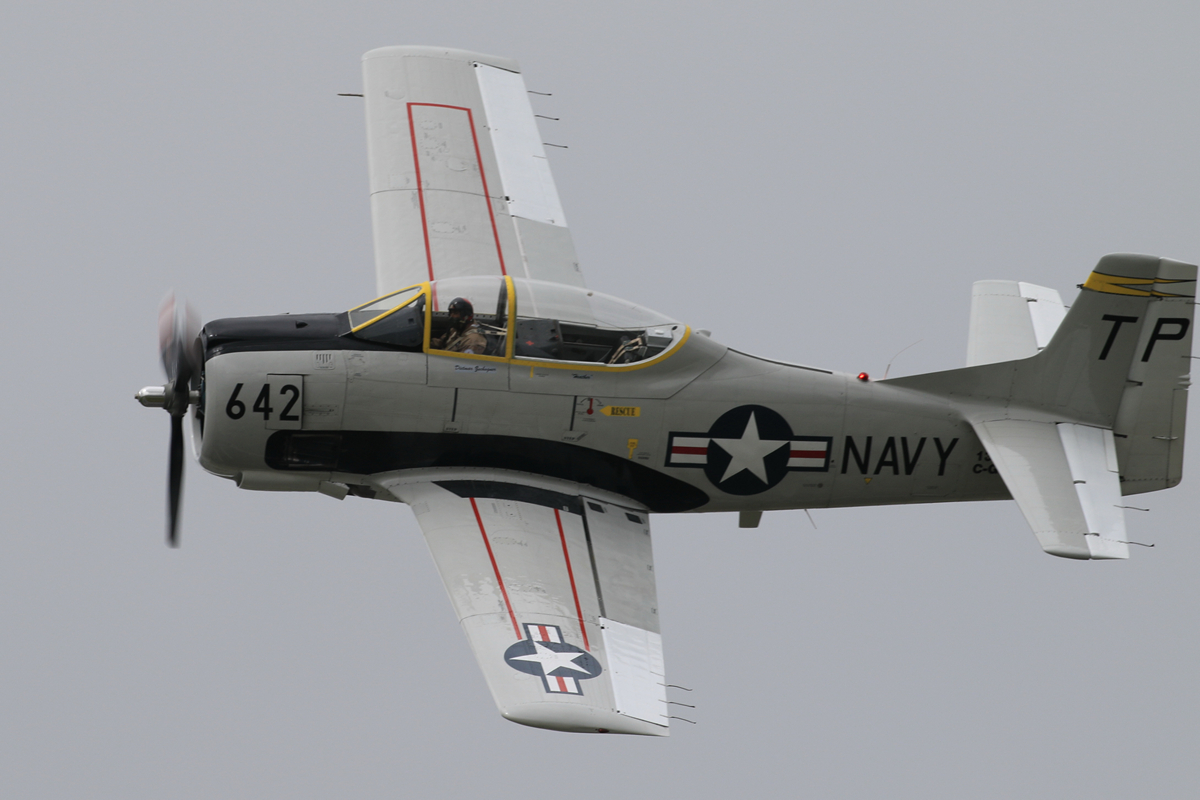
Aerobatics has been performed by three classic machines of this peculiar world; a Pitts Model 12S, a Yak-50 and a Yak-52. The Pitts, named after Thor, the Viking god of thunder, piloted by Jacob Holländer, delivered an aerobatic program often underlined with smokes, whose manouvers reach the climax when the plane hovers like an helicopter, literally hanging to the engine’s blades. The Yak-50 is a new acquisition of Sky Falk from Bergen; previously flying for the English team Aerostars, this Soviet-era acrobatic airplane (the first prototype flew in 1975) is now piloted by Håvard Dale, who will soon enter the competition’s circuit.
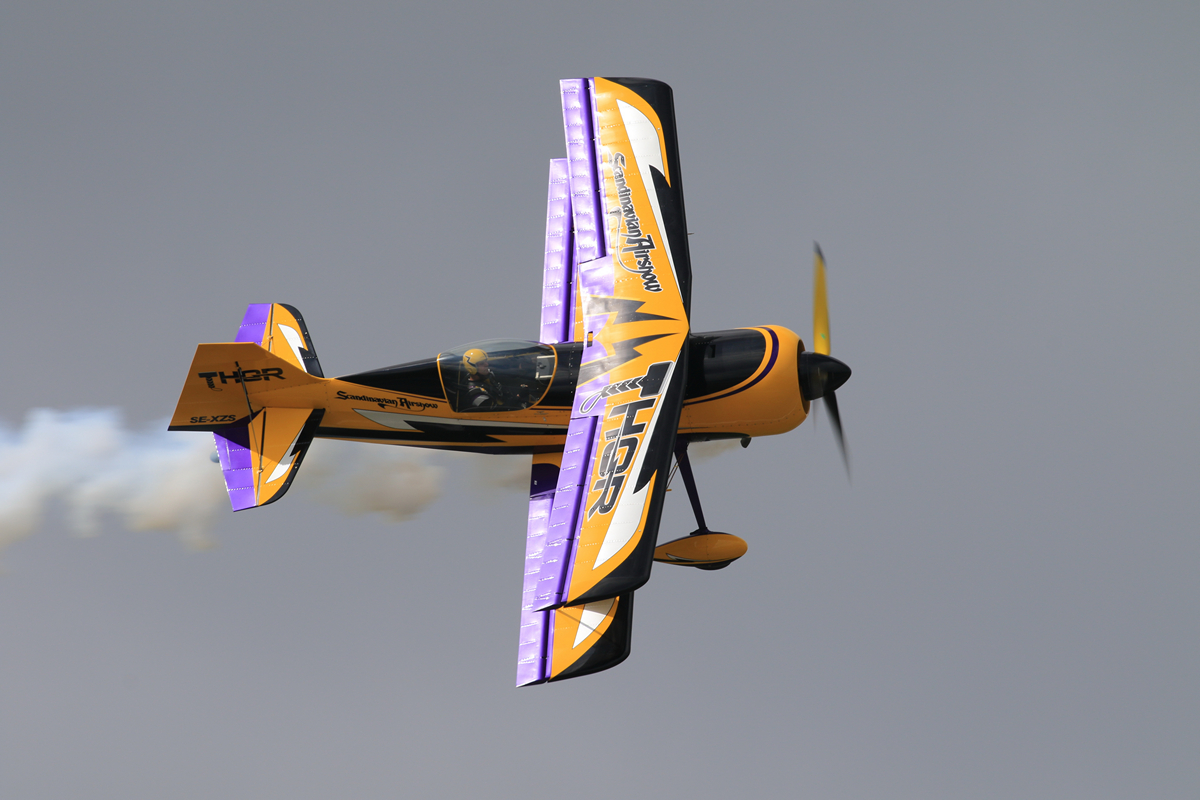
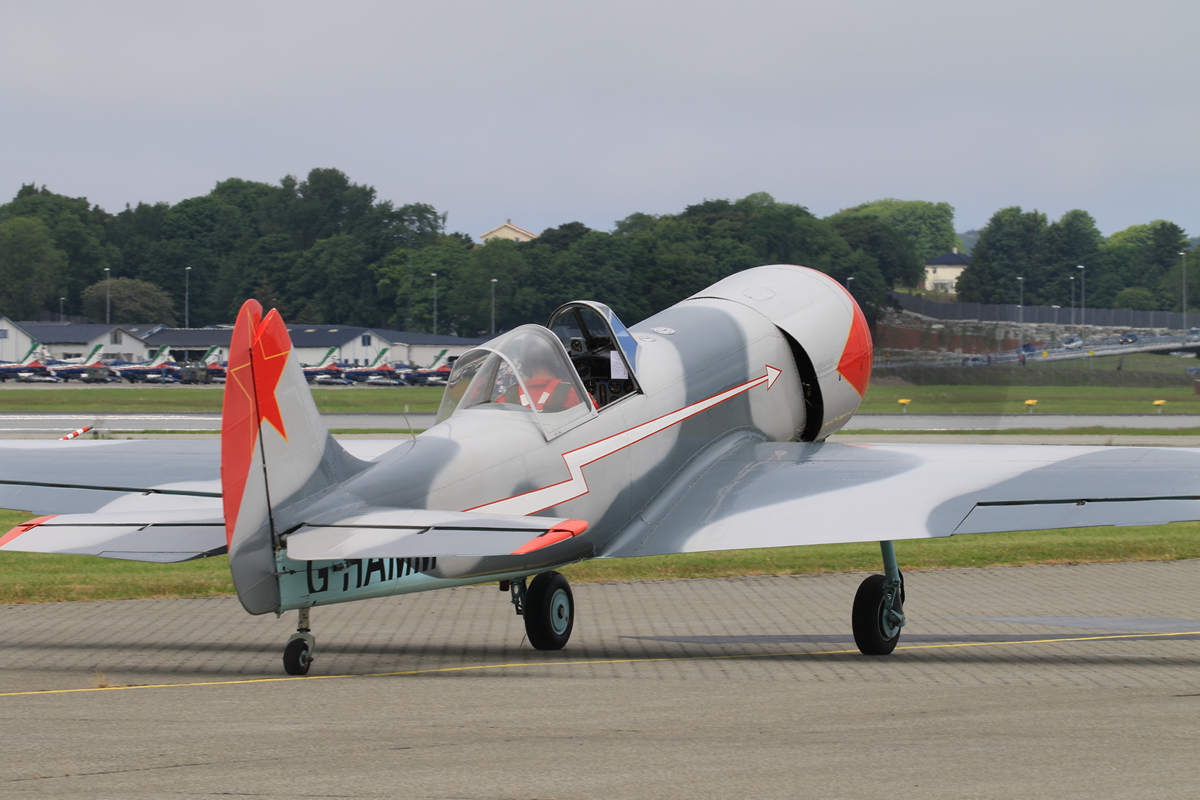
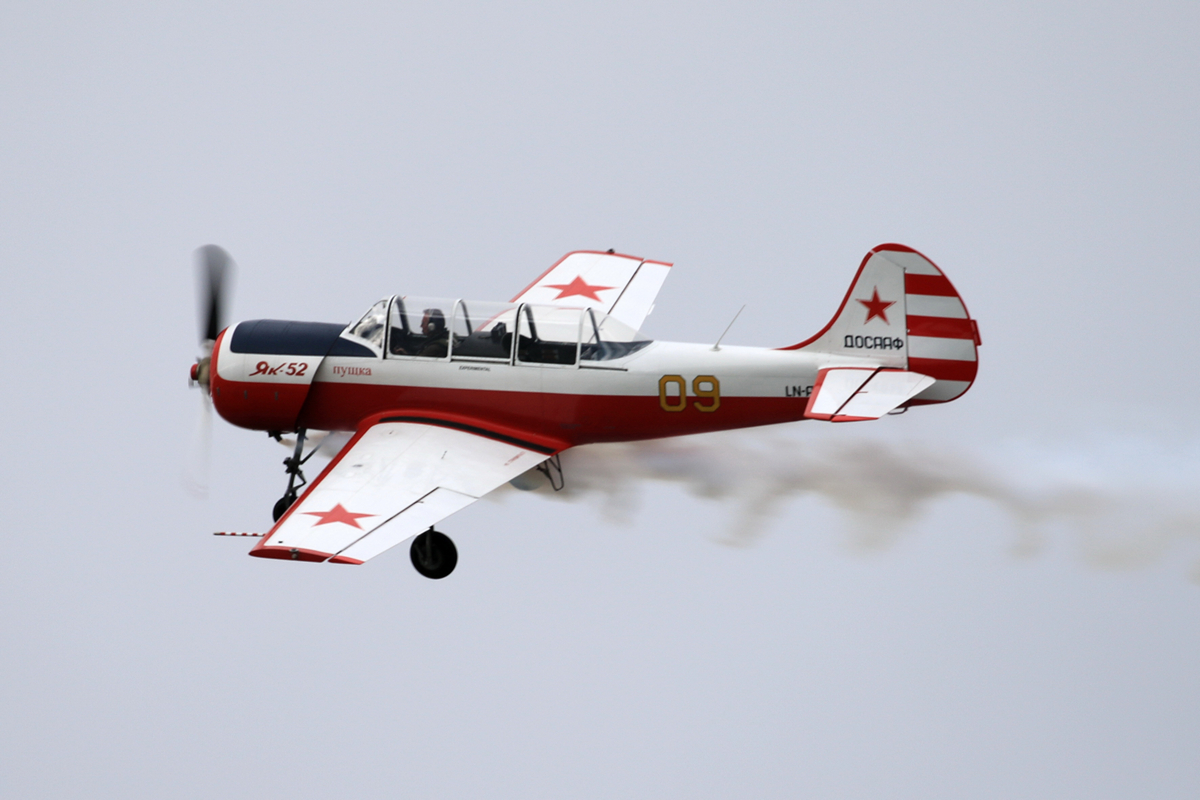
Sola Airshow has not been a lucky one for the two acrobatic teams participating, Frecce Tricolori and Breitling. On Saturday the Italian Air Force team has taken off with a very low cloud ceiling and, after a few formation passages, has been decided to suspend their exhibition for obvious safety reasons. A couple of hours later the Breitling team, recently returned from a two-years tour of North America, thanks to better weather conditions, has had the opportunity to complete their program, concluding with an opening behind the control tower complete with launch of flares. On Sunday fate has reversed; Frecce Tricolori have been able to perform their “low” program, while Breitling team has had to curtail its performance.
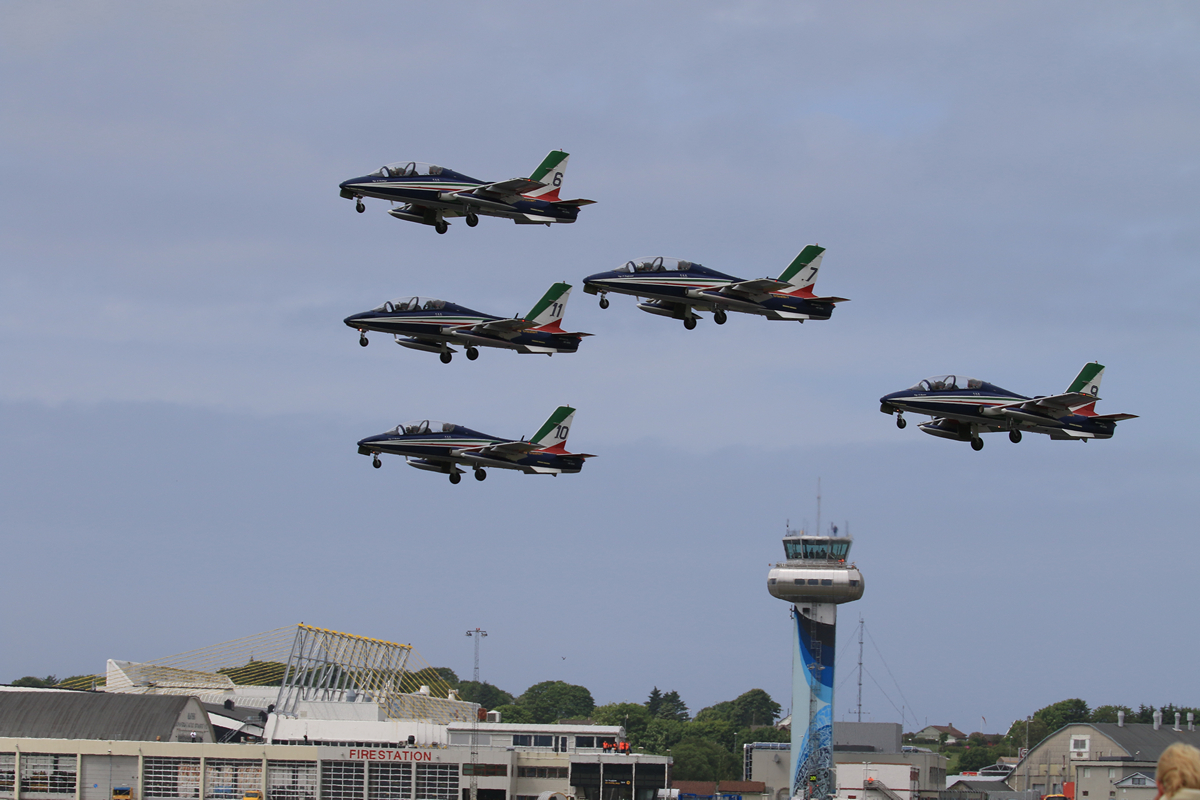
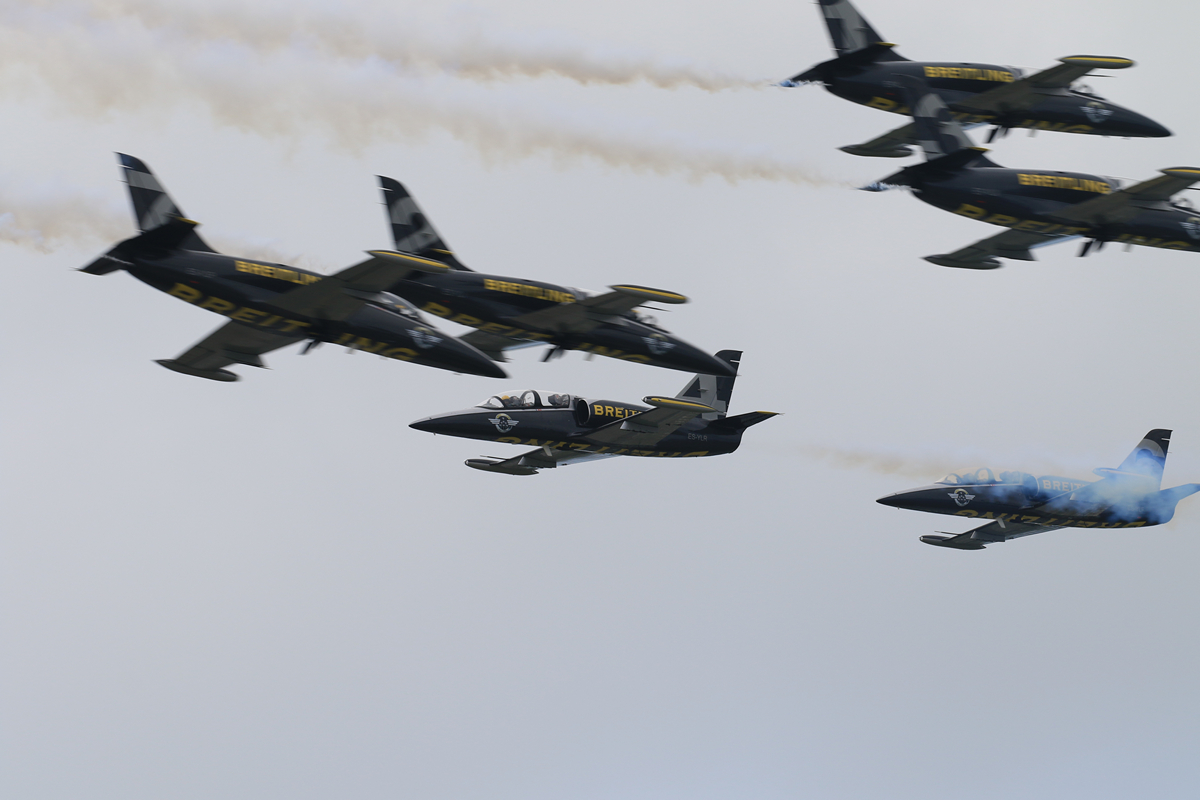
Jets have not interpreted a prominent role in the show; aside a couple of Norwegian Fighting Falcons, the other one flying has been the Belgian Demo, which takes part in several European airshows. The RNoAF F-16s have performed an aggressive programme, very dynamic and flown at relatively low level. On both days one of them has raced against a different BMW model (an i8 on Saturday and an M6 Gran Coupe on Sunday); both taking position in the middle of the runway, faced in opposite directions; at the start signal the car had to run to the end of the runway, U-turn and accelerate to reach the opposite runway limit. The Fighting Falcon had to execute quite the same route; once taken off the pilot had to turn immediately and try to overrun the BMW flying over the opposite runway treshold before the car could cut her finish line; quite predictably the BMWs won both races.
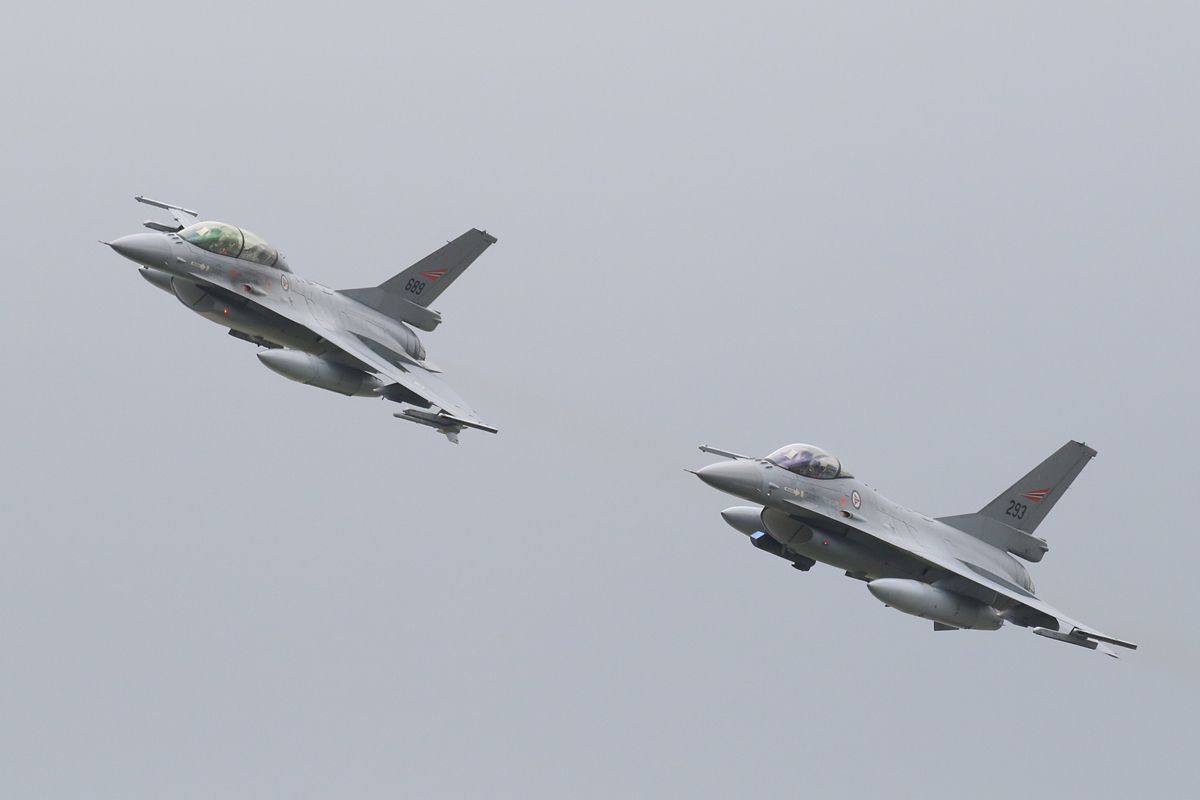

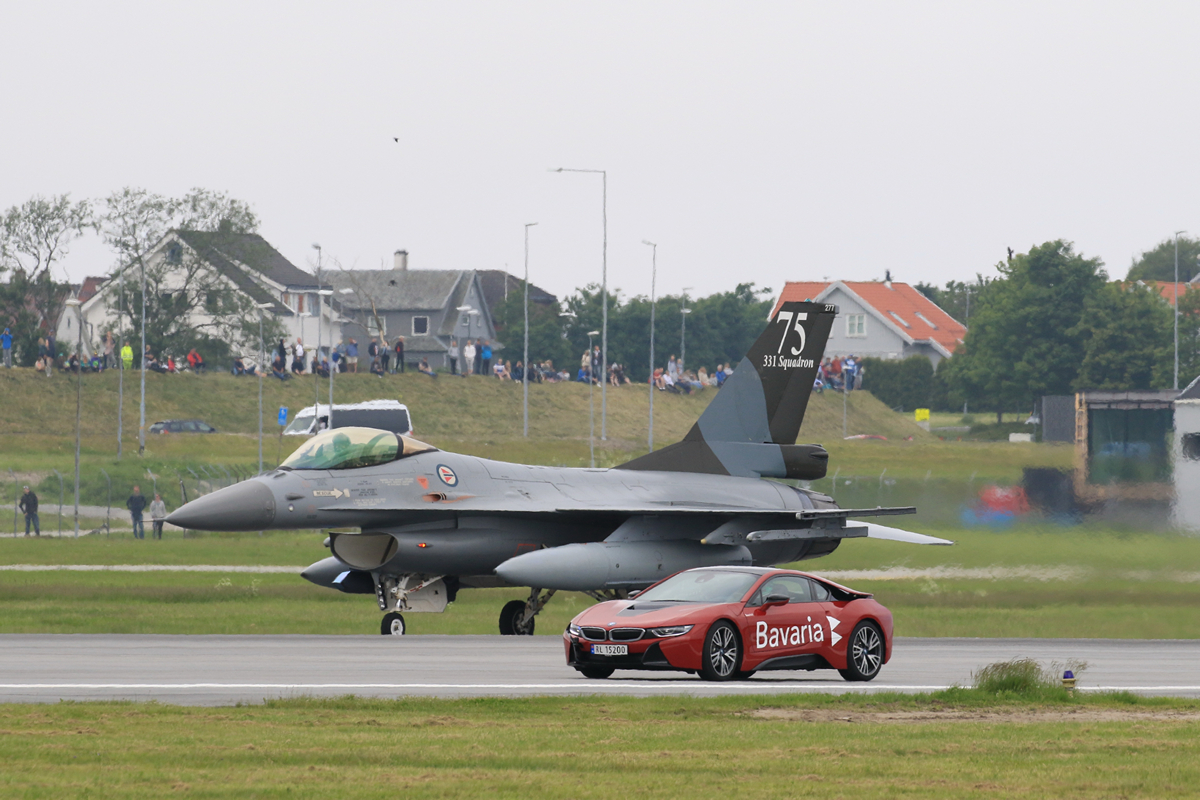
An interesting surprise has been the Blackshape Prime, an Italian designed and produced ultralight two seater airplane (her frame is fully made of carbon fiber) which is capable of impressing performance; the engine is a reliable Rotax 912 and the excellent aerodynamics allows this airplane to reach a speed of 150 knots and a range of almost 700 miles. Air Combat Europe brought three aircraft to the show and exhibited their business; the pilots of this private Dutch company have all thousands of flight hours on military planes of the Royal Netherlands Air Force and their task is let their clients experience real dogfights.
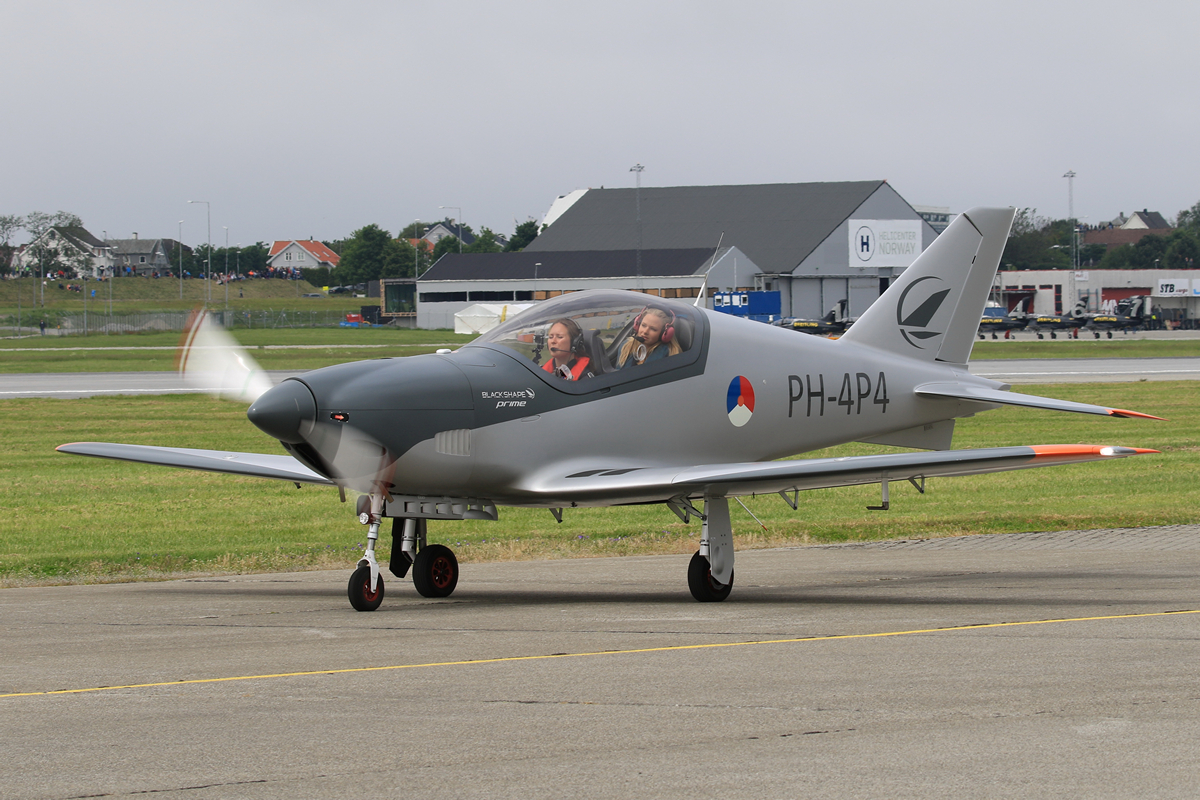
The airshow reserved also another couple of treats; Saturday a Norwegian B737-800 has taken the sky (hopefully with no passengers) to prove the aerobatics an airliner can do. Nonetheless the obvious limits of the airframe, it’s always awesome to see planes so big taking off and banking in a fighter-like fashion! Sunday’s present has been a single B-52H flyby; the bomber, from the 2nd Bomber Wing, Barksdale, Louisiana, was already in Europe to take part in BALTOPS and Saber Strike exercises.
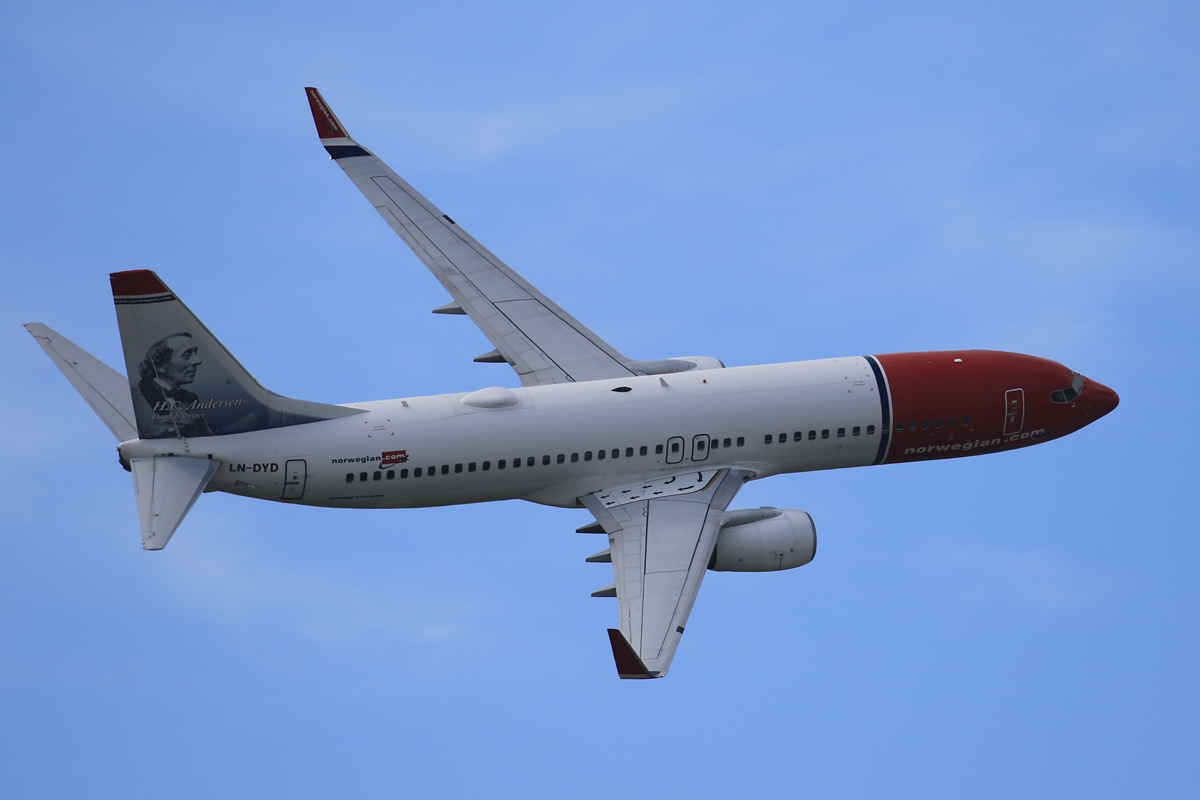
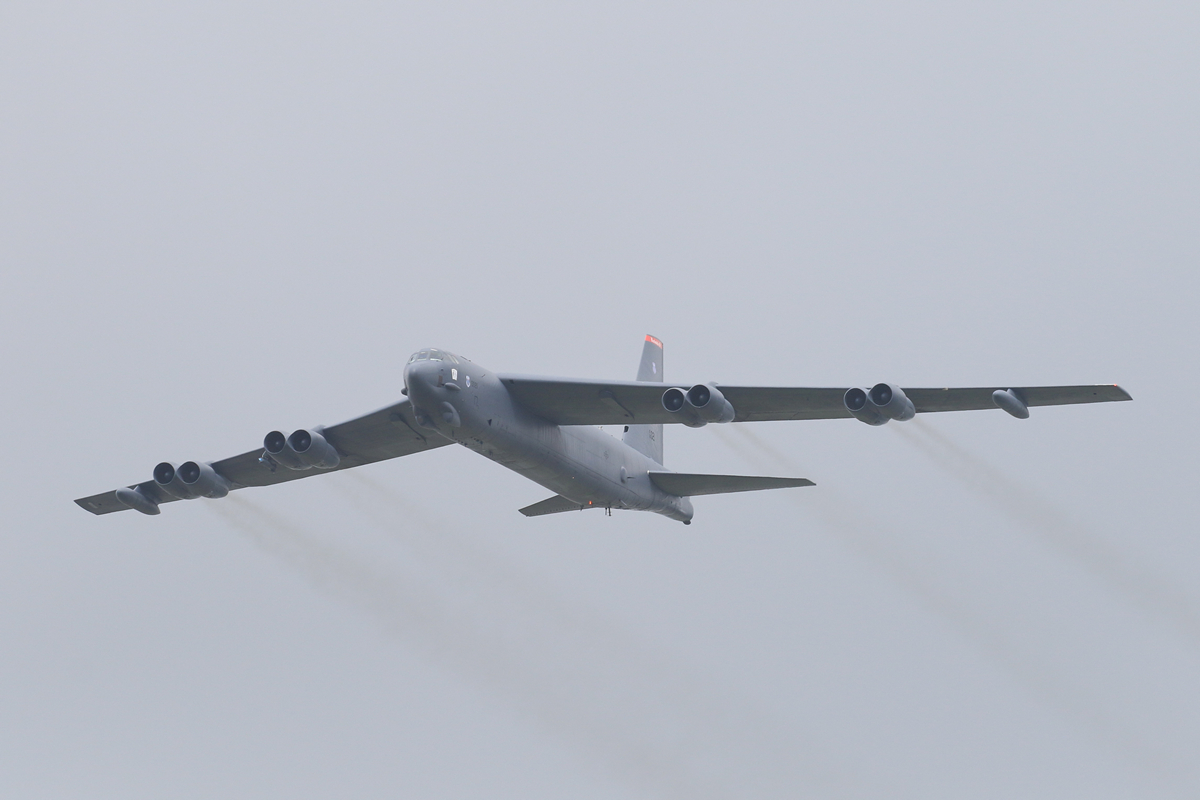
Static exhibition has been the weak side of the airshow, with not so many aircraft on display and most of them well known. Aside an interesting Beech King Air B200 used as air ambulance and a nice DHC-2 Beaver, the static has been a good opportunity to compare two helicopters of the same class, the Sikorsky S-92 and the newer NAWSARH (Norwegian All-Weather SAR Helicopter), an AgustaWestland AW101 customized according to the RNoAF requisites. The S-92s exhibited belong respectively to Bristow and CHC, two of the major helicopter services companies; both are based in the nearby heliport and bring daily oil workers forth and back from the offshore platforms.

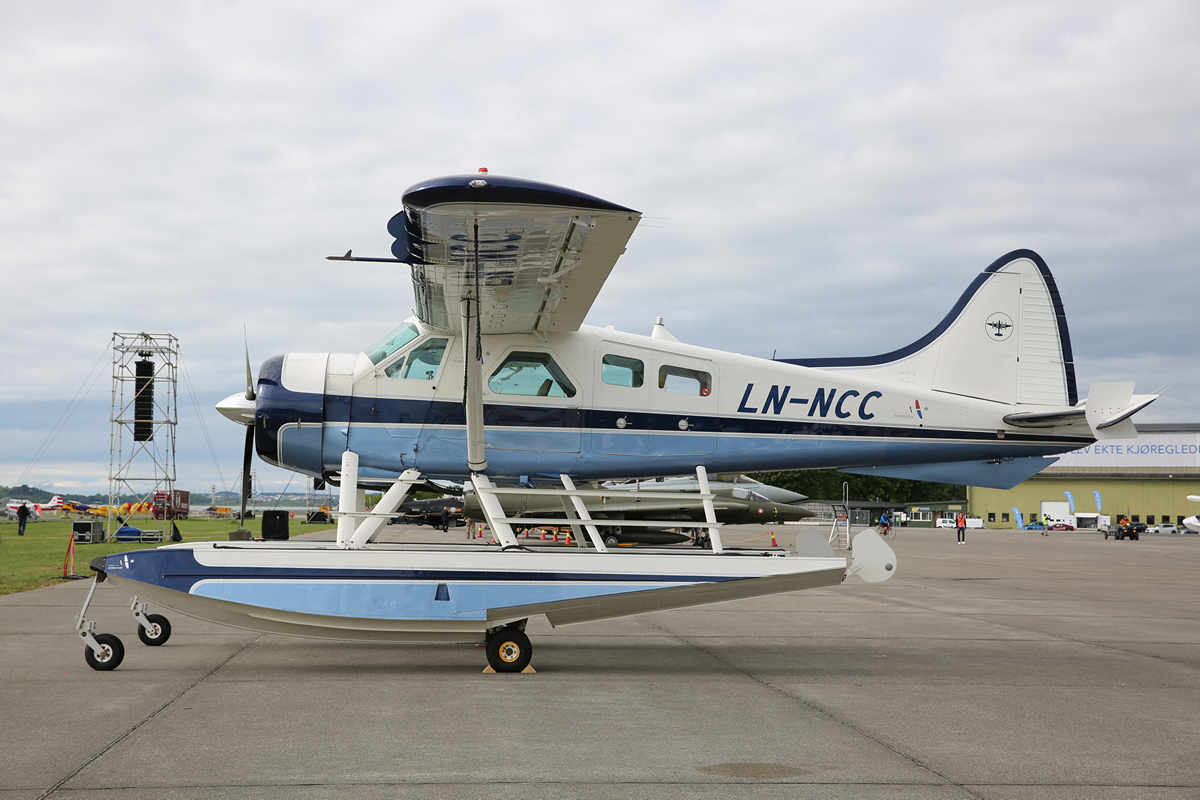
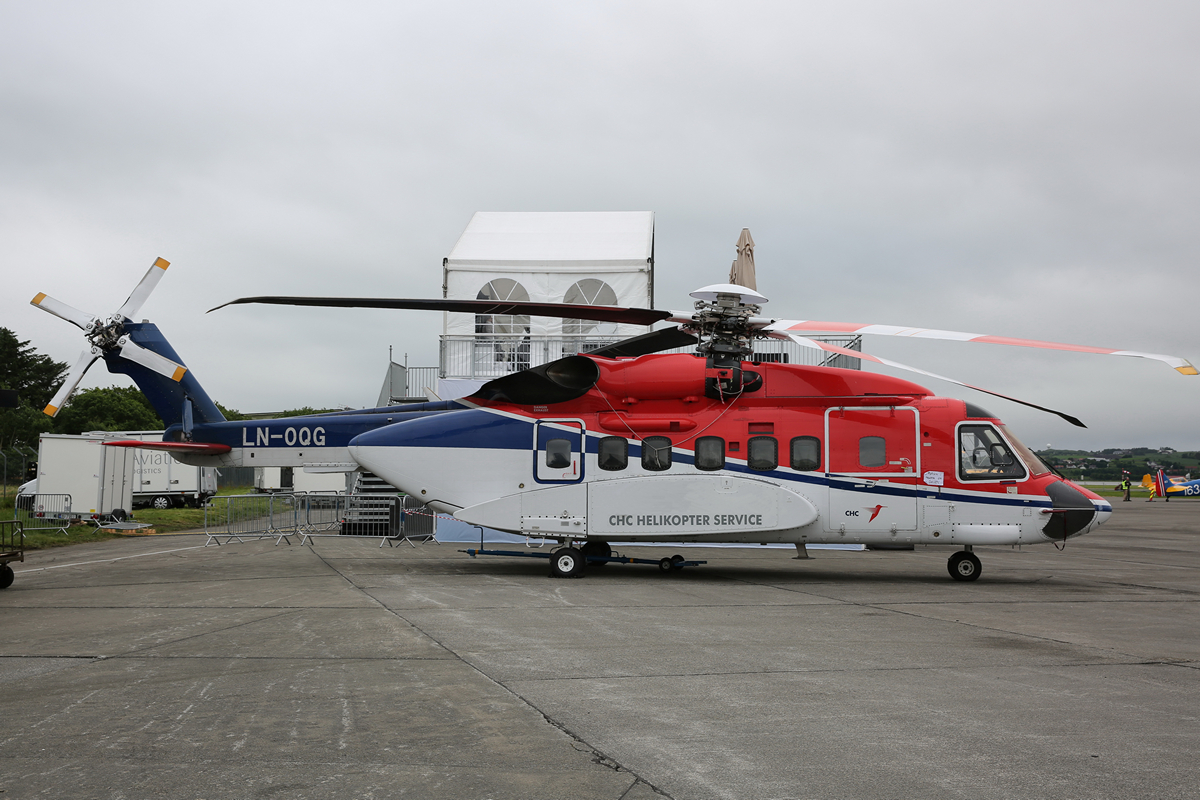
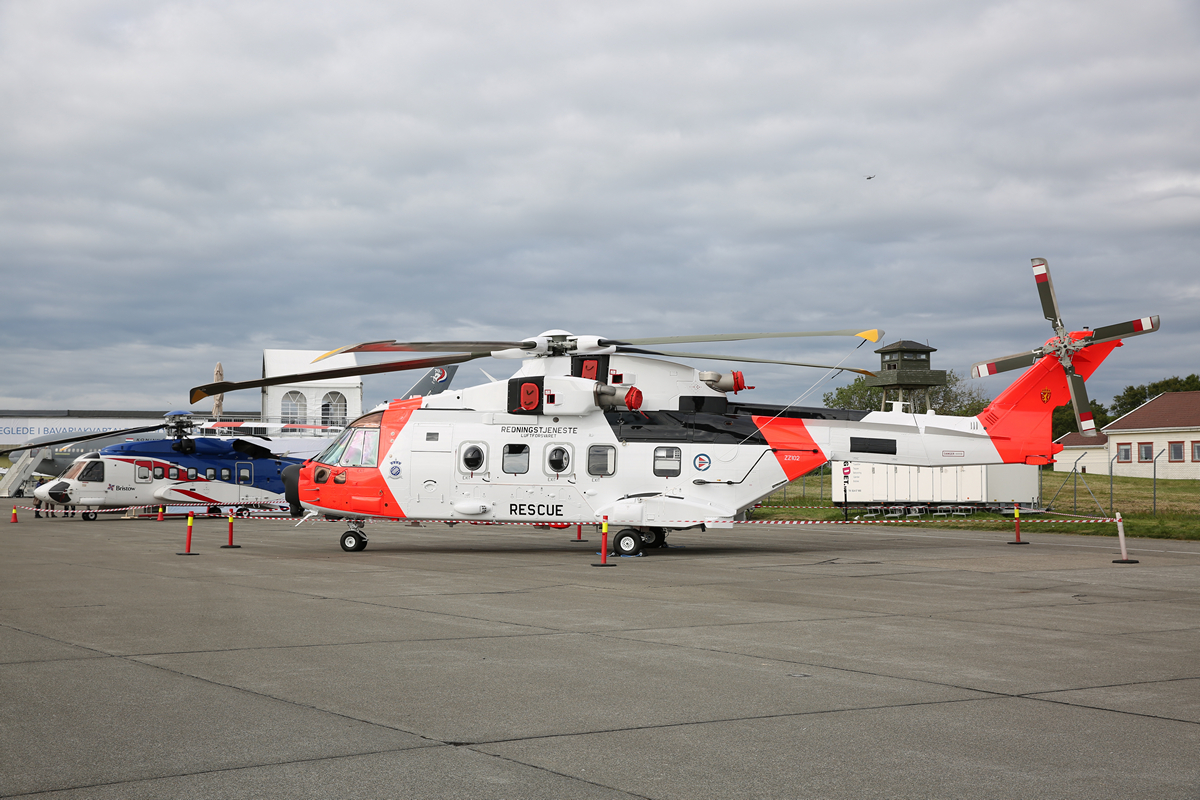
The AgustaWestland AW101 is the third one produced in the Yeovil plant and is still in the acceptance test phase; 16 of them will be delivered to the RNoAF started in March 2017 (will end in 2020) to take the place of the venerable Westland Sea King, but the Sola-based one missed not the chance to show everybody to be still able at performing SAR missions, flying the typical phase of the rescue of a person in distress hoisting down the rescue swimmer and recovering them together in a following hovering.

APD had the opportunity to exchange a few words with Andy Strachan, Leonardo Helicopters’ chief test pilot for this program, and he explained us why this helicopter is thought to be the most advanced for SAR missions: the adoption of the new Leonardo’s Osprey AESA radar, which covers 360 degrees with three fixed antennas, a four-axis digital AFCS (Automatic Flight Control System), a mobile telephone detection system and other state-of-the-art SAR related hardware. To enhance the flight safety the aircraft is equipped with a Laser Obstacle Avoidance System and an Obstacle Proximity LIDAR System; the three engine provide a sound redundancy, including a full ice protection system and a proven 30 minute “run dry” gearbox.
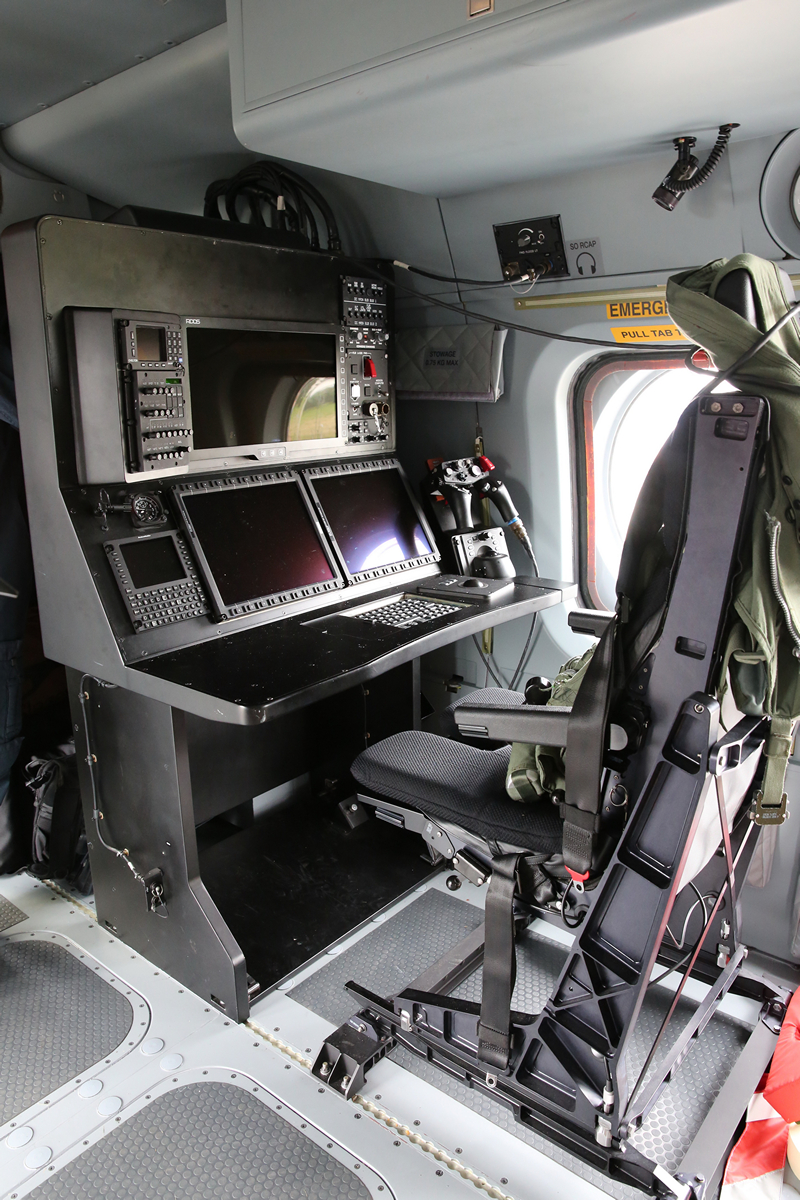
Strachan showed us the mission control console, where all the data provided by the various sensors are merged to give the mission operator full situational awareness, totally shared with the pilots. A new feature is the possibility for the hoist operator to tune the helicopter hovering once the pilot has brought the aircraft to the desired position, gaining advantage from his point of view of the area of operations. Other interesting features are the two hoists, one fixed in an heated fairing while the backup one can be swept back along the airframe in order to avoid freezing flying conditions. The helicopter is also provided with an integrated engine washing system that ease the servicing after hours of flying over salt waters.
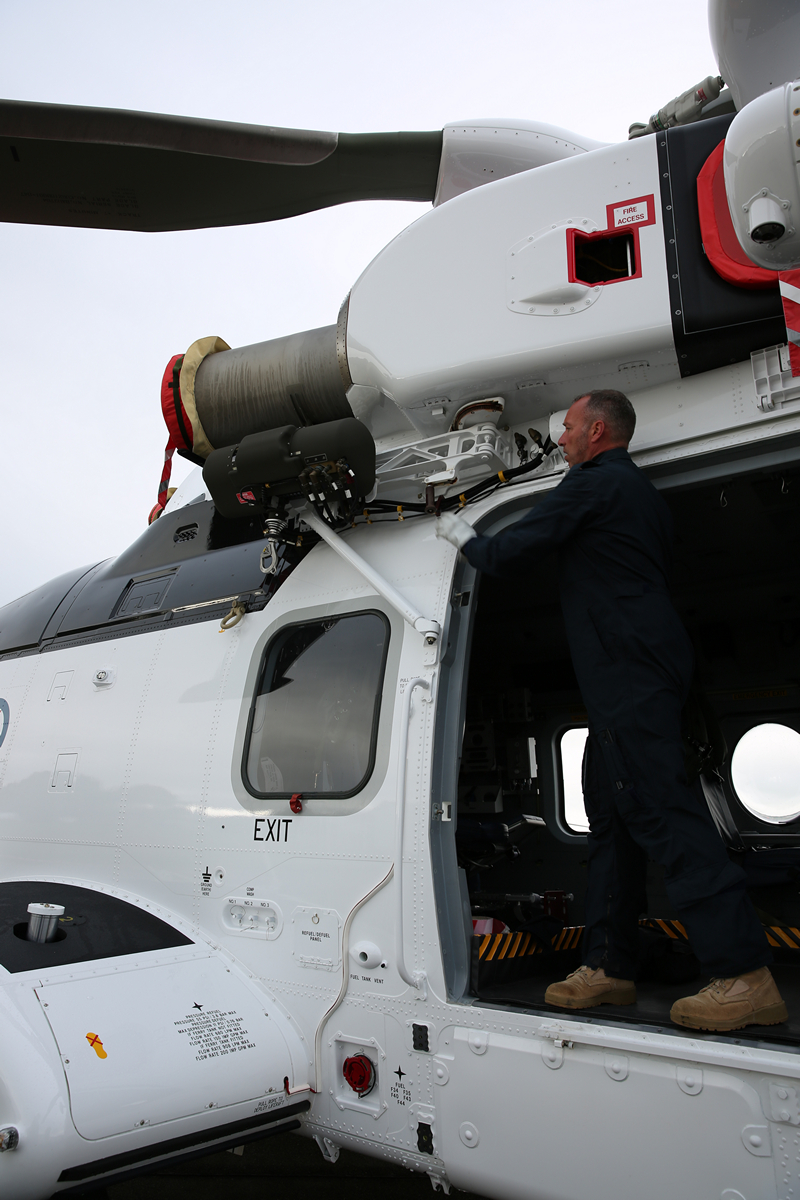

A few days after the airshow a Full Flight Simulator has been opened in Sola; the first pilots to be trained will be Norwegian but the Training Centre will become a service integrated in Leonardo Helicopters Training Academy.
We hope to be present when the Sea King will hand over to her successor the mission to take the sky and go to save lives!
Click on an image below to page or swipe through the gallery:
Gabriele was born in Turin, Italy, grew up in Sicily and now lives in Rome. His love for aviation goes back to the days when he was seven years old, he started to collect the ‘History of Aviation’ sold weekly at the nearby newsstand. With that, he realized that his goal was to become a military pilot. This dream met a harsh reality when, during the medical tests, a defect in his chromatic sense of sight was discovered.
His interest in photography arose a few years later, when he bought from a colleague his first single-lens reflex camera, a Pentax ME Super. Then everyday life took its toll; working as an IT analyst, studying for an MD in political science and starting a family left no time for enjoying his old interest for aviation. One day in 2008, he decided to revive the passion, starting again to take pictures of aircraft each time he has a chance. Now, using Canon gear, he is striving to become a photojournalist.
Gabriele can be reached at: [email protected]


